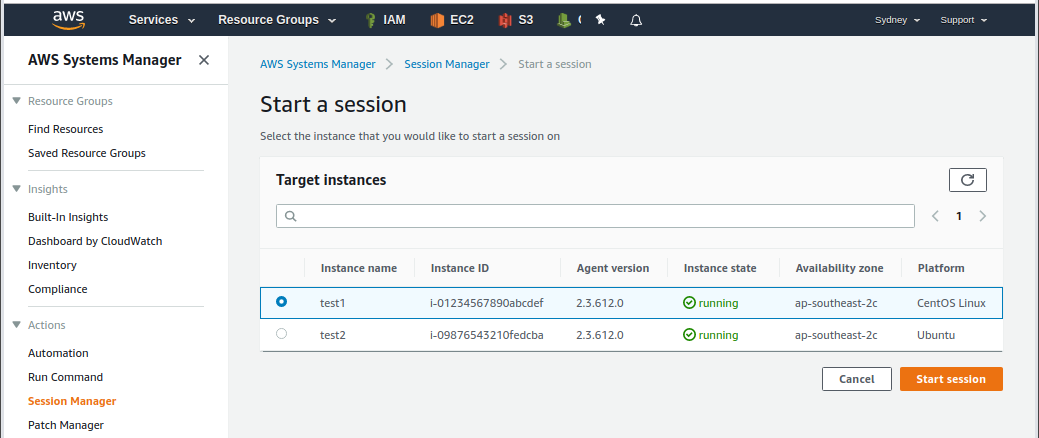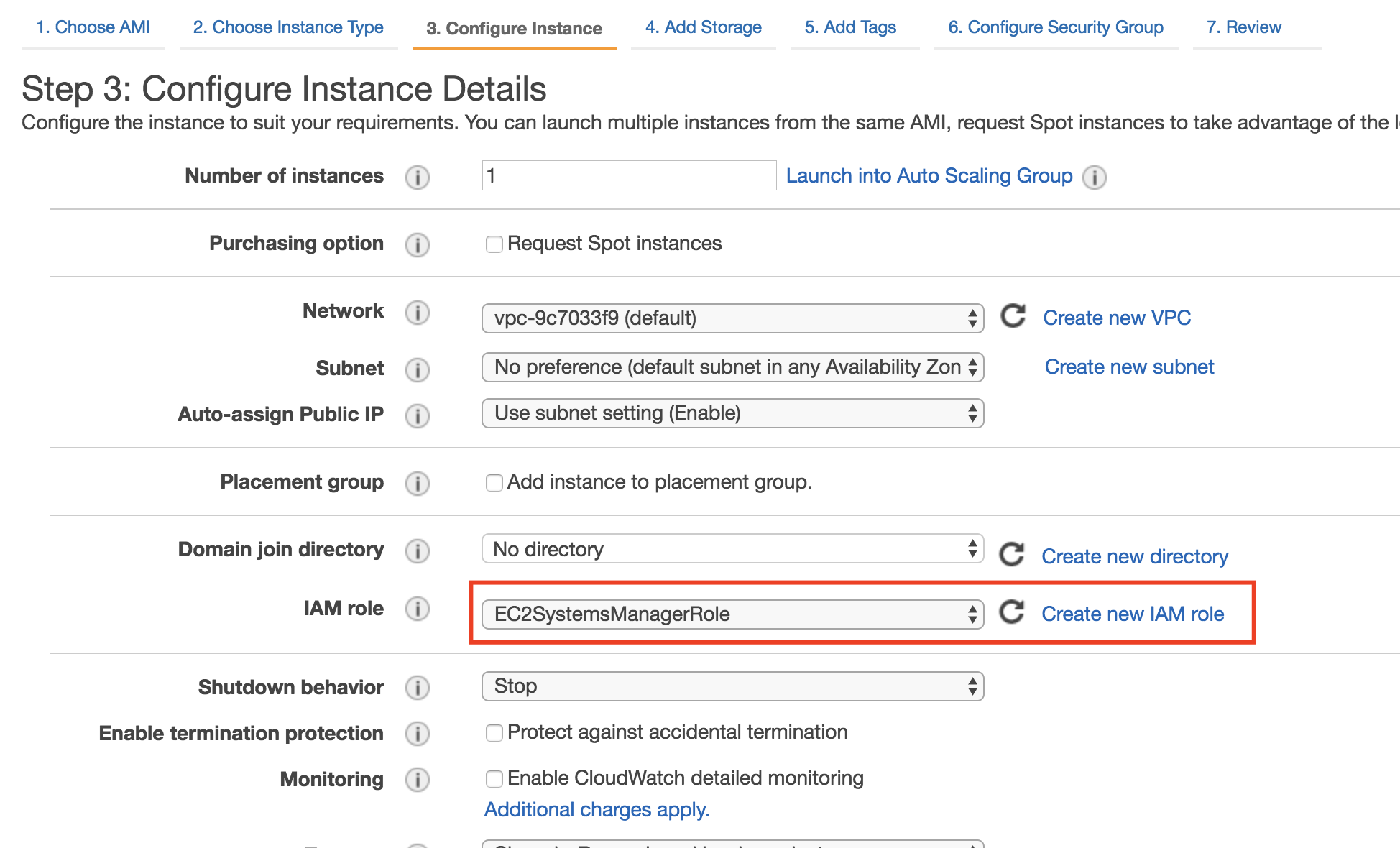

# yupp don't forget to send your public key to ec2Īws ec2-instance-connect send-ssh-public-key -instance-id i-xxxxxxxxxxxxxxxxx -instance-os-user ec2-user -ssh-public-key " $(<~/.ssh/id_rsa.pub ) " # similar to before plus some additional options to make ssh cloud ready

If you want to prevent Session Manager users from running administrative commands on a node, you can update the ssm-user account permissions. SSM Agent version 2.3.612.0 was released on May 8th, 2019. No keys necessaryĪs already said SSM Session Manager allows you get a shell on your EC2 instance by using your existing IAM credentials with the AWS CLI: This ssm-user is the default operating system (OS) user when a AWS Systems Manager Session Manager session is started.
#SSM SESSION MANAGER INSTALL#
Here you can read more about Setting up Session Manager.Īlternatively you can also enable Host Management through Systems Manager’s Quick Setup which will deploy the SSM Agent to all target instances.įinally, to use Session Manager through your AWS CLI, you need to install the Session Manager plugin. To get started you need an EC2 instance with the SSM Agent installed, an IAM role that includes the managed policy AmazonSSMManagedInstanceCore and allow the EC2 instance to access the SSM Session Manager APIs either through the InternetGateway or PrivateLink. The service also offers other helpful features which we won’t go into detail here, but it is definitely worth checking out the security improvements and auditing features that SSM Session Manager offers.
#SSM SESSION MANAGER HOW TO#
This post explores how to implement some common use-cases for SSH based sessions by using the SSM Session Manager. SSM Session Manager leverages your existing IAM user management to allow you to get a shell on your EC2 instances by using your existing IAM credentials with the AWS CLI or AWS Console. … we could go on but let’s leave it here.



 0 kommentar(er)
0 kommentar(er)
